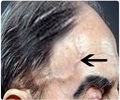
Their preclinical study appears online today in the Journal of Clinical Investigation.
"This innovative microRNA-based strategy can be used to combine anti-proliferative and pro-healing mechanisms for improved repair of coronary arteries," said the study's principal investigator Hana Totary-Jain, PhD, assistant professor of molecular pharmacology and physiology at the USF Health Morsani College of Medicine, who came to USF Health from CUMC last year.
"The most significant finding of our study is that for the first time we were able to achieve in one fell swoop both the inhibition of cells responsible for re-narrowing of the vessel, and preserving the 'good' endothelial cells that protect against thrombosis," said lead author Gaetano Santulli, MD, PhD, a cardiologist working at CUMC's College of Physicians & Surgeons.
Angioplasty, the world's most common medical procedure, opens a narrowed or blocked artery by inserting a small balloon into the blood vessel. If the artery is blocked, a tiny wire-mesh tube, known as a stent, is mounted on the end of the balloon to leave in the vessel when the balloon is removed. The stent holds the artery open and maintains blood flow after angioplasty clears the vessel of fatty deposits. Physicians performed 560,500 angioplasties in the United States in 2011, according to a recent report by the Agency for Healthcare Research and Quality, and, Dr. Santulli said, 70 to 90 percent of all angioplasty patients receive one or more stents.
Together, angioplasty and stenting have helped advance the field of interventional cardiology and save lives.
Advertisement










